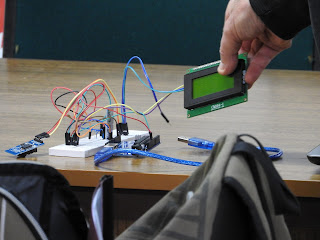The fantastic JT65 mode which is used for the WSPR beacon network relies on the web site at http://wsprnet.org

For several years, but dramatically lately, the site has been down.
WSPRnet.org is both a Drupal based discussion board with key information about WSPR but more importantly a database of sports reported by the client applications.
At the time of writing, the site reports:
346,759,392 total spots
326,804 in the last 24 hours
7,653 in the last hour
It wouldn't be so bad if just the discussion forum was down, but when the site goes down we lose the reports from remote stations as well. This could be critical for hams tracking beacons on balloons and of course is now relied on to get a view of propagation around the world.

The problems have not gone un-noticed not just in the forums (when up) but also on Twitter.
JT65 creator Joe Taylor posted on the site this morning:
"This excellent web site is written and maintained by Bruce Walker, W1BW. We haven't heard from Bruce in quite some time; presumably he's very busy with work or other obligations.
I get frequent emails from people saying something like "I applied for a WSPRnet account and received a confirmation email telling me approval was pending. Then nothing... Can you help?"
I always tell people to contact W1BW. But I can guess what happens, because I can't raise Bruce by email, either.
I think we need a volunteer who knows web programming to pitch in and help, perhaps sending Bruce a priority letter by FedEx or something to get the process started.
-- 73, Joe, K1JT"
I'm the author of an iOS application "WSPR Watch" that crawls the site to report spots and in the past I've tried to contact the site administrator to make sure I am being kind to the site. I was unable to get a response.
The site is well designed and has a great deal of functionality for displaying, searching and mapping spots.
The spot upload web service works like this:
http://wsprnet.org/post?function=wspr&tcall=ZL3DMH&dbm=37&tgrid=RE66&drift=0&date=151219&dt=-0.7&rcall=vk2tpm&version=3.00_r2328&sig=-19&rqrg=14.0956&time=2304&tqrg=14.097178&rgrid=QF56of
function wspr
tcall ZL3DMH
dbm 37
tgrid RE66
drift 0
date 151219
dt -0.7
rcall vk2tpm
version 3.00_r2328
sig -19
rqrg 14.0956
time 2304
tqrg 14.097178
rgrid QF56of
Response:
1 out of 1 spot(s) added
Processing took 65 milliseconds.
What's to be done?
The Drupal based discussion forum is fine and should remain as is, but I think that the spot database should move to a different domain and be backed by a cloud based scaleable architecture. The project should be managed by a team in the open.
The spot database should provide APIs both for client apps and reporting apps (like my WSPR Watch and iWSPR). These APIs should require a license token and be protected from overuse.
Hopefully wsprnet.org can return 301 Moved Permanently responses and the clients will jump over to the new API if not there will be a period of disruption but in the end we will end up with a system that can take us all forward.
I'm here to help as are many others. I'm grateful to the work done by Bruce Walker and I hope he's ok. What's the next step?

























































